Top 10 Deadliest Carnivorous Dinosaurs
The Top 10 Deadliest Carnivorous Dinosaurs, in my opinion in scientific research and/or the web. I've been enjoying dinosaurs for almost ten years, and after comparing the statistics of the carnivorous dinosaurs, here's what I think of as the perfect Deadly Carnivore Dino list. By the way this is only for carnivores. No herbivores included. Sorry my herbivore fans.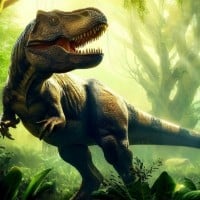 Tyrannosaurus, meaning "tyrant lizard", from the Ancient Greek tyrannos, "tyrant", and sauros, "lizard" is a genus of coelurosaurian theropod dinosaur. It also had a tremendous bite force, the strongest of any Dinosaur and living terrestrial animal. Its bite force reached up to 12,800 pounds (roughly... read more
Tyrannosaurus, meaning "tyrant lizard", from the Ancient Greek tyrannos, "tyrant", and sauros, "lizard" is a genus of coelurosaurian theropod dinosaur. It also had a tremendous bite force, the strongest of any Dinosaur and living terrestrial animal. Its bite force reached up to 12,800 pounds (roughly... read more Tyrannosaurus Rex! The Official King of Dinos! So why number 2? Most lists support T-Rex as number 1 because of his dino "royalty", made famous in Jurassic Park. Well, here is why: Also known as "T-Rex", Tyranno is not as big as earlier giants such as Spinosaurus, Giganotosaurus, Carcharodontosaurus, Saurophaganax, Tyrannotitan, or Mapusaurus. So to bring it, T-Rex is NOT the largest dino in history (sorry to ruin your childhood). BUT the Tyrant King also HAS many objectives in his favor. Some facts that bring him in to be number 2 is that he has binocular vision, an above-average brain, bone-crushing jaws, and infecting teeth. You probably haven't heard of the last one, eh? Well, newer research has proven that T-Rex has dead meat stuck in his teeth. The meat, rotting in his teeth, will transfer into a victim's bloodline as T-Rex crunches into their body and the bacteria-filled saliva flows into the veins. The bacteria from the rotting meat will start to weaken the victim, so even if T-Rex doesn't manage to kill his victim, the victim will die sooner or later anyways. - RaptorOnFire1206
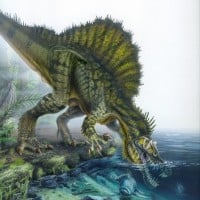 A carnivorous dinosaur that lived in the Cretaceous period, Spinosaurus Aegyptiacus is best known for its elongated neural spines, which formed a sail-like structure on its back. Native to regions of North Africa, it is thought to have been semi-aquatic and primarily fed on fish.
A carnivorous dinosaur that lived in the Cretaceous period, Spinosaurus Aegyptiacus is best known for its elongated neural spines, which formed a sail-like structure on its back. Native to regions of North Africa, it is thought to have been semi-aquatic and primarily fed on fish. Try to imagine a 52 to 59 foot tall land predator with a body full of weapons that included massively-long arms with huge slashing claws, a powerful whip like tail, a humongous sail on its back, and a massive crocodile-like snout full of teeth that are about 18 meters in length. This wasn't like any creature today on earth, and it probably wouldn't be a particularly graceful animal. This was clearly an animal that was built for power. In fact, Spinosaurus, as far as the eye can see, must have been a truly homicidal dinosaur to encounter.
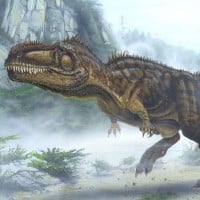 A theropod dinosaur that lived during the Late Cretaceous period, Giganotosaurus Carolinii was native to what is now Argentina. Notably large, it is one of the biggest known meat-eating dinosaurs, with estimates suggesting it could grow up to 40 feet long.
A theropod dinosaur that lived during the Late Cretaceous period, Giganotosaurus Carolinii was native to what is now Argentina. Notably large, it is one of the biggest known meat-eating dinosaurs, with estimates suggesting it could grow up to 40 feet long. Giganotosaurus: The second largest dinosaur next to Spinosaurus, Giga had a stronger bite force then Spinosaurus. Though his bite force is not yet as strong as T-Rex's, Giganotosaurus's size beats almost every factor in Tyrannosaurus. Plus, Giganotosaurus has longer arms then the puny... Um, stumps, of T-Rex. At the same time, Giga is proven to have a lighter build then T-Rex, which means Giganotosaurus can run faster (studies have shown that while Rex runs up to 15 mph, Giganotosaurus can be as speedy as 20 mph or more). Giganotosaurus is also known to hunt in packs, since many Giganotosaurus skeletons are found together, probably so they could bring down large sauropods such as Argentinosaurus. After all, Giga deserves to be number one in my opinion. - RaptorOnFire1206
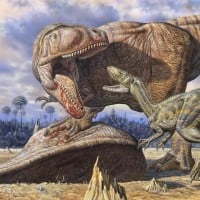
The third-largest land predator after Spinosaurus and Giganotosaurus, Carcharodontosaurus is basically an oversized version of the famous Allosaurus. Studies have shown that Carcharodontosaurus has the same brain function and size as an Allosaurus, and have the same attacking strategies. The only thing that sets Carchar apart from Allosaurus is that Carcharodontosaurus is about 45 feet long, longer than a 41 foot long T-Rex, and much longer than a 39 foot long Allosaurus. But there is still another similarity between Carchar and Allo: They WEREN'T, yes WEREN'T, the top predator of their time. They were both 2nd to the top: Carcharodontosaurus was ruled by Spinosaurus, and Allosaurus was under the mighty reign of Saurophaganax (though Sauro is thought to be a new specimen of Allosaurus by some scientists). Still, Carcharodontosaurus is a formidable predator, and is very experienced at fighting after all these years sharing the homeland of Spino. - RaptorOnFire1206

Rajasaurus is a large Indian predator that ruled the Late Cretaceous India alongside Indosaurus. Rajasaurus often battled Indosaurus for meat, usually Indosaurus killing a herbivore with his speed and wits, and Rajasaurus, scaring Indosaurus off with his size. Even though 9 feet longer (Rajasaurus = 29 feet, Indosaurus =20 feet), Rajasaurus doesn't have the speed and wit to hunt like Indosaurus. So the Rajasaurus always had to rely on the smaller but more deadly Indosaurus for food. - RaptorOnFire1206
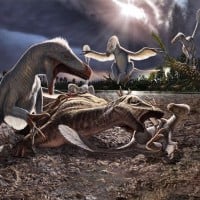
The largest living raptor the world has known, this 20 foot long Utahraptor is Mr. Titan among these hook-clawed thieves. Velociraptor, the most famous raptor (because of Jurassic Park), is an average sized raptor at about 6 feet long and 3 feet tall. Deinonychus, a bit larger, is around 10 feet long and 5 feet tall (J.P. potrayed Velociraptor's size to be the size of Deinonchyus). But the true monster, Utahraptor, is averaged at 19 feet long and 8 feet tall. Utahraptor wasn't as speedy as the 35 mph Dromaeosaurus (a member of the raptors aka. Dromaeosaurs), but Utahraptor already tops the speed at 30 mph max., far outrunning other bigger predators such as T-Rex and Giganotosaurus. But what really sets Utahraptor apart from most big killers is he has the brain of the raptors: Smart, tactical, way above average. They say Utahraptor has a brain the size of an Eagle's! So think of this: Who Utahraptor really is: A really intelligent and super agile and fast Ceratosaurus with hooked claws. My, my, my! It's a monster out of a bad dream! (Also, recent studies have predicted that Utahraptor might've grown to the size of a small Allosaurus, though there is not enough proof to make it a fact. But if that was true, Utahraptor would be the deadliest of them all! ) - RaptorOnFire1206
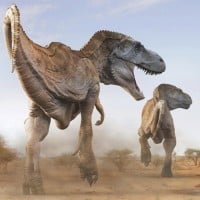 Tarbosaurus is a genus of tyrannosaurid theropod dinosaur that flourished in Asia about 70 million years ago, at the end of the Late Cretaceous Period.
Tarbosaurus is a genus of tyrannosaurid theropod dinosaur that flourished in Asia about 70 million years ago, at the end of the Late Cretaceous Period. Tarbosaurus is T-Rex's distant cousin of China and Mongolia. Tarbosaurus is just as powerful as T-Rex but lacking a few of Rex's most deadly features. First, Tarbo is quite smaller, at around 36-38 feet long (although some scientists believe that Tarbosaurus is over 40 feet long). Second, Tarbosaurus lacks T-Rex's binocular vision, and third, Tarbo lacks T-Rex's poisonous saliva. But Tarbosaurus does have his American cousin's bone-crushing jaws, though. And they say Tarbo might be a little faster too. Tarbo also has his cousin's above-average sized brain capacity. - RaptorOnFire1206
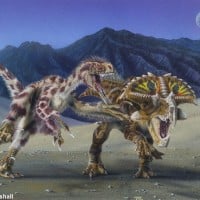
Velociraptor gained fame through Jurassic Park, where it was portrayed as being man-sized, capable of turning doorknobs, and outsmarting humans. However, none of that is true. The size of the Velociraptor in Jurassic Park is based on Deinonychus, which stands at 5.5 feet tall and 10 feet long. So, what about the Velociraptor? In reality, Velociraptor is only the size of a fully grown Turkey, measuring about 7 feet long and 3 feet tall. Additionally, no dinosaur, including the two smartest dinosaurs, Utahraptor and Troodon, could turn doorknobs or outsmart humans. Nevertheless, Velociraptor is an intelligent dinosaur and one of the fastest as well. It hunted Protoceratops in Mongolia and ranked as the second top predator, following the Tyrannosaur Tarbosaurus. - RaptorOnFire1206
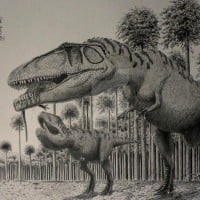 Mapusaurus was a giant carnosaurian dinosaur from the early Late Cretaceous of what is now Argentina and possibly Chile.
Mapusaurus was a giant carnosaurian dinosaur from the early Late Cretaceous of what is now Argentina and possibly Chile. Mapusaurus is a close cousin of Giganotosaurus, if not a juvenile of Giga. But studies prove that Mapusaurus is a slightly different dinosaur, with a smaller, lighter build, weaker jaws, more of a pack hunter, and a slightly larger brain. Mapusaurus is about the size of T-Rex and Allosaurus, at around 40-42 feet long. Evidence suggests that Mapusaurus traveled in family groups, since bones showed baby, juvenile, and adult Mapusaurus bones scattered near each other. Mapusaurus probably hunted in packs so they could bring down the large Argentinosaurus of his time. Even though a formidable predator, Mapusaurus is not king of his land. That throne is for Giganotosaurus! - RaptorOnFire1206
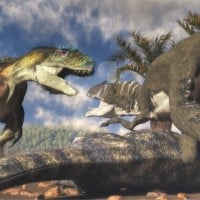
Similar to Carcharodontosaurus, Saurophaganax is a basic oversized Allo. This dinosaur in 43 feet long, almost the same length as Carcharodontosaurus (45 feet) and Tyrannotitan (42 feet). Sauro is much bigger than his close relative, Allosaurus (39 feet), though. Saurophaganax and Allo are so closely related, and lived at the same time and place as Allosaurus did, many scientists wonder if Saurophaganax was a new Allosaurus specimen. - RaptorOnFire1206
Saurophaganax could Kill you in minutes. You can outrun creatures like Tarbosaurus and Tyrannosaurus. This thing was THE killing machine. T. Rex is no match for S. Maximus!
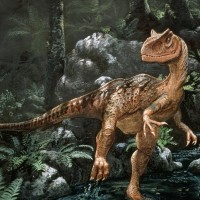
Probably the most famous theropod dinosaur next to T-Rex, Velociraptor, and Spinosaurus, made famous by Sir Arthur Conan Doyle's the Lost World: A Novel, Allosaurus was one of the most wide-distributed dinosaurs of his era, and being 2nd top predator next to Saurophaganax (though recent studies showed that Saurophaganax was probably just a larger specimen of Allosaurus). Allosaurus killed prey with his regular carnosaur features: Claws, teeth, and, of course, size. It also had two bony knobs on its head, but is most possibly used to scare prey or for attracting mates, but is probably not strong enough for defense of attack. Allosaurus was also probably a swift predator, reaching up to speeds of 24-25 mph. They also say that Allosaurus was a pack hunter, since once they found about 40 Allosaurus skeletons all together in one spot, probably because they found a herbivore stuck in the mud and every five allosauruses or so try to get to the herbivore at a time, but get stuck in the mud nonetheless. That shows you that Allosaurus probably wasn't the brightest dino, but he squeezed into the Top 10 because this dino is quite a ruthless pack hunter. - RaptorOnFire1206
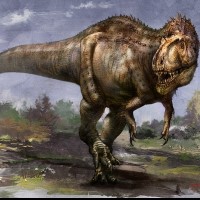 A theropod dinosaur that existed during the Late Jurassic period, Sinraptor Dongi was discovered in China. Although its name means "Chinese thief," it was primarily a carnivorous predator with a length estimated to be around 25 feet.
A theropod dinosaur that existed during the Late Jurassic period, Sinraptor Dongi was discovered in China. Although its name means "Chinese thief," it was primarily a carnivorous predator with a length estimated to be around 25 feet. Sinraptor really isn't a raptor, but a closer relative to Allosaurus and Yangchuanosaurus. I have NO idea why Sinraptor is named a "raptor", but... well, sue the namers. This dino is quite small for an Allosauridae, only reaching up to about 25 feet long and about 7 feet tall. So, really, how did this tiny allosaur reach the list? Smaller than the already puny Yangchuanosaurus, Sinraptor is known for its cunning, a little bit smarter than the not-as-bright allosaurs of later times. Which brings us to... Yeah, Sinraptor is from the early-mid Jurassic Period, unlike Allosaurus, which comes from the Late Jurassic period, and unlike Yang, which came into play during the mid-late Jurassic. But, like Yang but unlike Allo, Sinraptor is from China. Sinraptor uses its speed to hunt down speedy dinos such as the feathered little dino Epidexipteryx and sometimes a little bit larger herbivores such as the sauropod Shunosaurus. Which brings us to the subject of Sinraptor's speed, which can overpower Allosaurus's quick pace of 24 mph... Sinraptor is known to run at speeds of 26-29 mph, not besting the dinosaur race cars the raptors, but instead already besting the speed limit of a dino that's Sinraptor's size and bulk. - RaptorOnFire1206
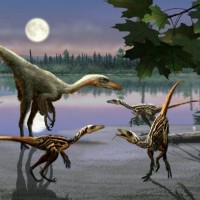 A small theropod dinosaur from the Late Cretaceous period, Troodon Inequalis was native to North America. It had a well-developed brain for its size, suggesting higher intelligence compared to other dinosaurs, and it is known for its sickle-shaped claws.
A small theropod dinosaur from the Late Cretaceous period, Troodon Inequalis was native to North America. It had a well-developed brain for its size, suggesting higher intelligence compared to other dinosaurs, and it is known for its sickle-shaped claws. As far as dinosaurs go, Troodon was the rocket scientist of all dinosaurs. This five foot long genius dino was a dromaeosauridae, or, more commonly known as "raptor". Some scientists say Utahraptor was the most intelligent of dinosaurs, but more scientists today observe that Troodon was probably the smartest of all dinosaurs. With the IQ of a crow, Troodon was a small, intelligent raptor that usually hunted during the night. They say Troodon could see in the night, and that was when Troodon usually hunted, so he wouldn't have to confront bigger dinos of the time such as Tyrannosaurus Rex. This 2 foot tall reptile would spot prey in even the darkest of nights. And as far as dinos go, Troodon was the Albert Einstein of the dinosaurs (while we can say Utahraptor, coming in with an IQ of an eagle and coming in second place, would be the dinosaurs' Thomas Edison). - RaptorOnFire1206
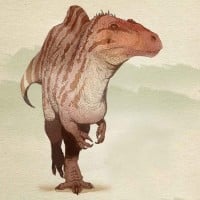 Acrocanthosaurus is a genus of theropod dinosaur that existed in what is now North America during the Aptian and early Albian stages of the Early Cretaceous.
Acrocanthosaurus is a genus of theropod dinosaur that existed in what is now North America during the Aptian and early Albian stages of the Early Cretaceous. This ought to be on the list. Acro is probably one of the largest predators on land, tied with T-Rex at 40-41 feet long. Acrocanthosaurus ruled the Early Cretaceous, hunting down sauropods and even armored anklyosaurs. Acrocanthosaurus is huge, I gotta take that, but he is only down here because he A. Isn't a very bright dino, and B. This guy is pretty slow. Sometimes even being big won't bring you into the Top 10! -RaptorOnFire1206
NEEDS TO BE IN TOP 10! This could take down any of the ones above and was bigger than most of them

Carnotaurus, featured in Disney: Dinosaur, is a large theropod capable of taking down large sauropods with his great jaws in the Late Cretaceous South America, feeding alongside the larger and probably more deadly Abelisaurus. This 30 foot long dinosaur has spikes running down his whole body, probably for protection. A heavyweight, this dinosaur probably took down slower dinosaurs such as sauropods instead of faster iguanodonts, as shown in the movie Disney: Dinosaur. Carnotaurus's name means "meat-eating bull" because 1. Carnotaurus is a carnivore and 2. Carnotaurus has two large horns on the top of his eyes. Carnotaurus probably used his horns to cause wounds in victims, or maybe just for display and attracting mates. Anyhow, this 30 foot long dinosaur is a terror to behold. - RaptorOnFire1206
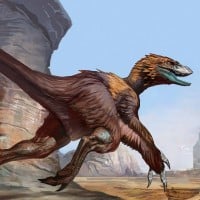 Deinonychus is a genus of carnivorous dromaeosaurid coelurosaurian theropod dinosaur with one described species, Deinonychus antirrhopus. This species, which could grow up to 3.4 metres (11 ft) long, lived during the early Cretaceous Period, about 115–108 million years ago (from the mid-Aptian to... read more
Deinonychus is a genus of carnivorous dromaeosaurid coelurosaurian theropod dinosaur with one described species, Deinonychus antirrhopus. This species, which could grow up to 3.4 metres (11 ft) long, lived during the early Cretaceous Period, about 115–108 million years ago (from the mid-Aptian to... read more "Size isn't everything! " - Some Random Guy said. Well, that Random Guy is correct. Deinonychus Antirrhopus isn't a real big dino. Actually, he is pretty small, since he's a dromeosaurid like Utahraptor and Velociraptor. Well, Utahraptor may be 19 feet long and 8 feet tall, but for such a deadly dinosaur like Deinonychus, 10 feet long and 5 feet tall is way more than enough. Why? Well, first of all, Deinonychus, like most raptors, hunted in packs. Usually in groups of 7 or 8 (unlike Utahraptor's groups of 3 thru 5), Deinonychus could bring down dinosaurs several times his size, such as its favorite prey, Tenotosaurus, a 30-foot-long iguanodont. Another reason about why Deinonychus is so deadly is because of his cunning. Like all raptors, Deinonychus's brain is WAY above average, with the brain almost the size of a crow's. Deinonychus also, like all raptors, have huge, hook-clawed feet. The second toe acts like a kitchen knife: It sliced through flesh in seconds. Last of all, Deinonychus acts in speed. Racing at up to 35 (some scientists predict 40) miles per hour, Deinonychus was the race car of the dinosaurs. Here's a cool fact: In Jurassic Park, Velociraptor's size was actually based on Deinonychus: Velociraptor's actual size was only about the size of a large beagle. Isn't that just LOL? - RaptorOnFire1206
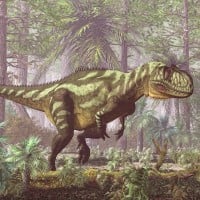
Yes, I'm going down the list now. Now would be Mr. Yangchuanosaurus, close cousin of his more famous (and stuck-up, in Yang's opinion) cousin Allosaurus Fragilis, made famous from Sir Arthur Conan Doyle's The Lost World: A Novel. Well, Yangchuanosaurus got pushed down the list because... Well, he was SMALLER. Allosaurus was matchable at 39 feet long, able to take down massive sauropods such as Diplodocus and Brachiosaurus. Whattaya 'bout Yang? Well, he's this 32-34 foot long PUNYsaurus (at least puny for his family branch, the allosauridae) that hunts down the much smaller sauropods such as Mamenchisaurus and the stegosaur Kentrosaurus. Also, Yang wasn't as fast as Allosaurus since he weighed about a ton more. Yangchuanosaurus was also not quite as intellegent.
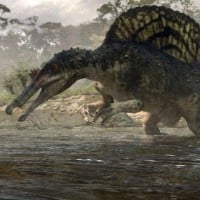
Oxalia is a large spinosauridae, roughly the size of smaller allosauridae like Torvosaurus or Yangchuanosaurus. Oxalia is essentially a miniature version of Spinosaurus. However, this 35-foot-long spinosaur rarely hunted other dinosaurs except under rare circumstances, such as when the riverbed dried up. Typically, this Late Cretaceous Brazilian predator primarily hunted fish and occasionally smaller crocodiles in the riverbed, coexisting with Abelisaurus and Carnotaurus on its land. - RaptorOnFire1206
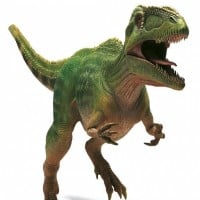
Tyrannotitan is a very new dinosaur, discovered in 2005. Little information is known about Tyrannotitan since only fragments of one skeleton of a Tyrannotitan have been discovered. The bones suggest a large Allosauridae, about 40-43 feet in length (avg. At 42 feet). This early-mid Cretaceous probably competed with larger predators such as Giganotosaurus and Mapusaurus, since all three lived in the Early Cretaceous (115 mya) in Argentina. Even though not much has been known from this new theropod, he is able to shove into the list with his big size. - RaptorOnFire1206
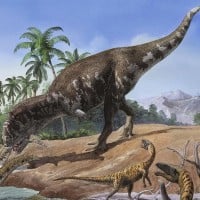 Majungasaurus is a genus of abelisaurid theropod dinosaur that lived in Madagascar from 70 to 66 million years ago, at the end of the Cretaceous Period. The genus contains a single species, Majungasaurus crenatissimus.
Majungasaurus is a genus of abelisaurid theropod dinosaur that lived in Madagascar from 70 to 66 million years ago, at the end of the Cretaceous Period. The genus contains a single species, Majungasaurus crenatissimus. Majungasaurus (formerly Majungatholus) was a large African hunter from the Late Cretaceous period and one of the only dinosaurs discovered in Madagascar, an island near Africa. On Majungasaurus's island, food was scarce, so there are many skeletons showing that Majungasaurus was a cannibal, as there were Majungasaurus teeth marks on smaller Majungasaurus bones. Majungasaurus was a medium-sized predator, measuring around 30 feet long. It possessed a mighty bite force and usually hunted rodents and lizards, but sometimes resorted to cannibalism. The dinosaur had a dome on the top of its head, probably for displaying to females. The dome was the reason why Majungasaurus used to be called "Majungatholus" because "tholus" was Greek for "dome." - RaptorOnFire1206
Dilophosaurus is a genus of theropod dinosaur. It contains a single known Species. Dilophosaurus is known from fossil remains found in the Kayenta formation of Arizona USA. This rock formation has been dated to the early Jurassic period about 193 mya. Dilophosaurus was among the largest carnivores of it's time about 7 meters long and had a pair of rounded crests on it's skull.
This is NOT a real dinosaur, so this doesn't count, and it only exist in King Kong movies.

Megaraptor, hence his name, was NOT a raptor. Actually, Megaraptor is a small Allosauridae. This 25 foot long Late Cretaceous Argentina predator had a 10-inch sickle claw on his first finger, not toe. The claw was probably used to slice prey open. Megaraptor probably scavenged, though, on leftovers by larger predators of that time and place such as Giganotosaurus, Mapusaurus, and Tyrannotitan. - RaptorOnFire1206

Megalosaurus! Prominently the first dinosaur ever discovered, Megalosaurus was a primitive mid-Jurassic 30 foot long monster that hunted down small mid-Jurassic sauropods. The first dinosaur ever to be discovered, Megalosaurus was named "Big lizard" because that was what the scientists thought of Megalosaurus at the time (the 1700's). Megalosaurus was big, but wasn't the most brightest of dinosaurs. Since this dino was a primitive reptile, Megalosaurus had a relatively small, unfocused brain. But this monster made up for his size, being one of the biggest theropods of his time (160 mya, 10 million years before Allosaurus). - RaptorOnFire1206
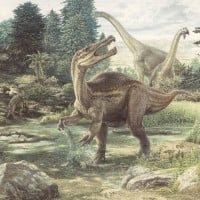 Baryonyx is a genus of theropod dinosaur which lived in the Barremian stage of the early Cretaceous Period, about 130–125 million years ago.
Baryonyx is a genus of theropod dinosaur which lived in the Barremian stage of the early Cretaceous Period, about 130–125 million years ago. Probably one of the coolest spinosaruids ever. Its smaller than the spinosaurus but in my opinion its smaller size is an advantage. It probably wouldn't beat other dinosaurs because they are fish eaters but I feel they are still deadly if they use their claws for battle.